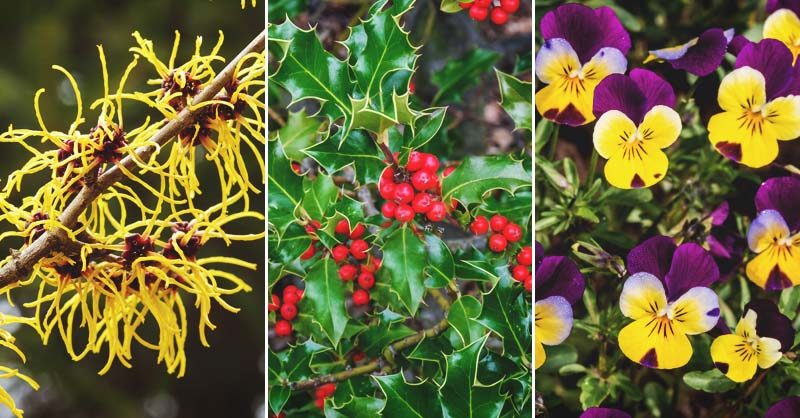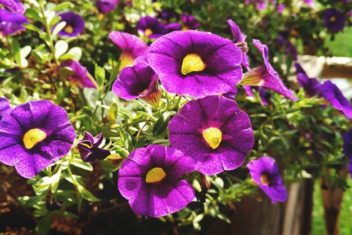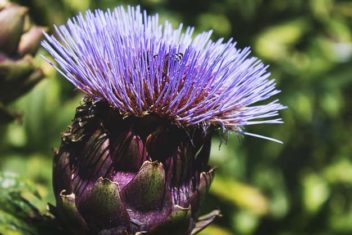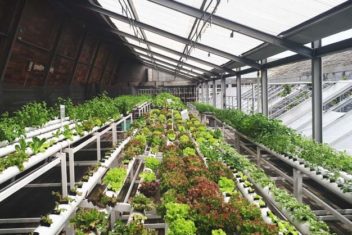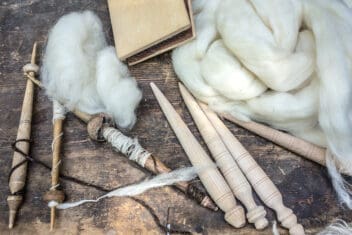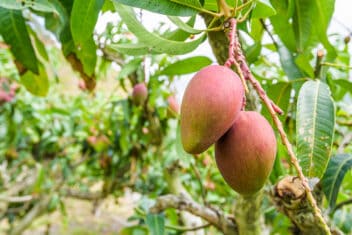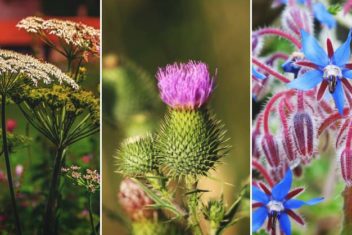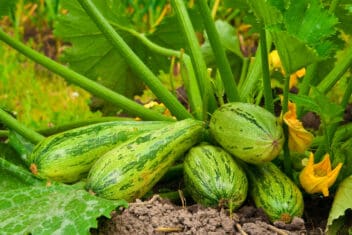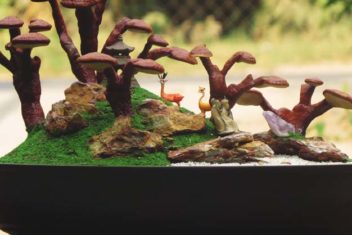If you’re feeling gloomy about the dreary winter days, consider adding some color to your garden with a few winter flowers. While the dormant season has its own beauty, sometimes the lack of vibrancy can get a bit bland. A few cheery blossoms can make all the difference.
I can hear what you’re thinking. Is it possible to grow flowers in the winter? That depends entirely on where you live. Certain climates and growing zones offer up a suitable environment and plenty of sunlight for flowers to thrive even during the colder months. Some places don’t experience harsh winters, so buds aren’t killed off by extreme temperatures.
Some flower varieties thrive even in colder zones and can produce wondrous blooms while everything else lays dormant.
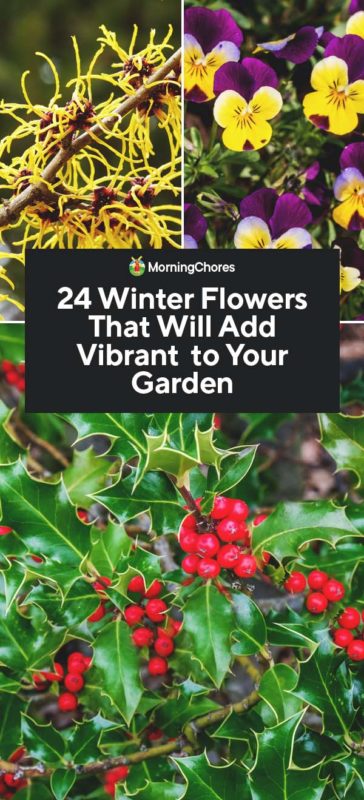
Why Plant Winter Flowers?
Why should you bother with winter-blooming plants if everything else will be dormant and dead during the winter? There’s more to it than adding some color. Most winter flowers are incredibly hardy and easy to maintain. Often, they’re perennial, so there’s no need to waste time re-planting each season. Even better, these plants provide color and texture year-round.
Some flowering plants provide a food source for birds and other animals that stick around during the cold months. Adding winter-hardy blooms to your garden is truly the only way to enjoy natural .color during every season. And, of course, a splash of color amid an otherwise bleak garden landscape allows you to enjoy and appreciate your garden even when it’s been put to bed for the winter.
When choosing flowering plants for your winter garden, it’s important to note the zone hardiness of the plant. Different species will bloom at varying times, and some may be hardier than others. Don’t be afraid to inquire at your local nursery and ask for suggestions on what to plant.
Adding color to the winter garden doesn’t just have to involve flowers, either. Many plants offer a display of color through the production of berries and foliage. If you live in an area with severely cold winters, there are plenty of evergreen shrubs and plants to choose from that produce colorful berries or interesting foliage even during the winter months.
Don’t feel discouraged if you can’t seem to find flowers capable of surviving your harsh climate. Talk to other gardeners in your zone for suggestions on adding color to an otherwise drab winter scene.
24 Plants with Winter Flowers
1. Holly
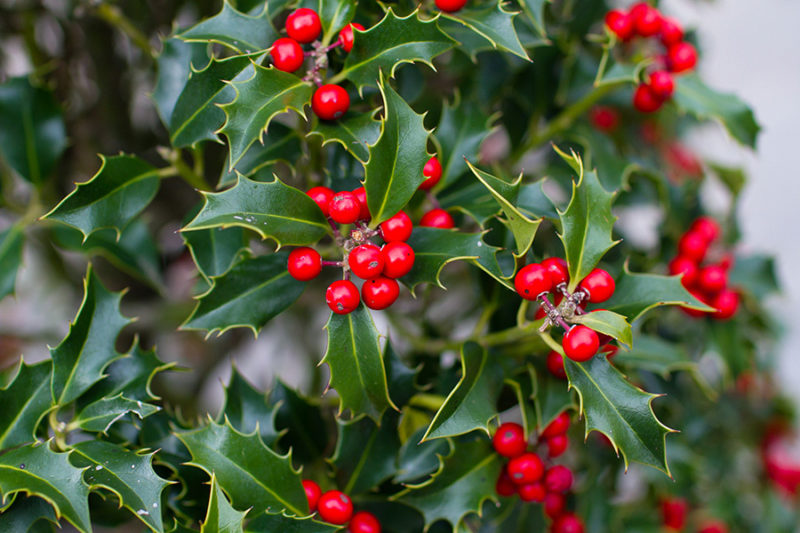
The first item on this list is holly, which is a tree and not a flower. But I think it offers one of the most beautiful displays of color during the winter for areas that get downright frigid. There’s a good reason that this plant is often used in Christmas-themed motifs.
Even under a pile of snow, a holly plant will keep on adding color to your yard. Its green foliage and bright red berries are a stark contrast to a white-washed snow-filled scene. To grow a colorful holly display, you’ll need two plants: one male and one female. Female plants will only produce berries if they’re fertilized by a male plant. Without a male to cross-pollinate with a female, you won’t be treated to a beautiful red-tinged display.
Zone: Depends on the variety, but generally ranges between 4 to 9
Bloom time: Flowers appears in the spring and summer, but the berries will crop up towards the end of the fall season.
2. Crocus
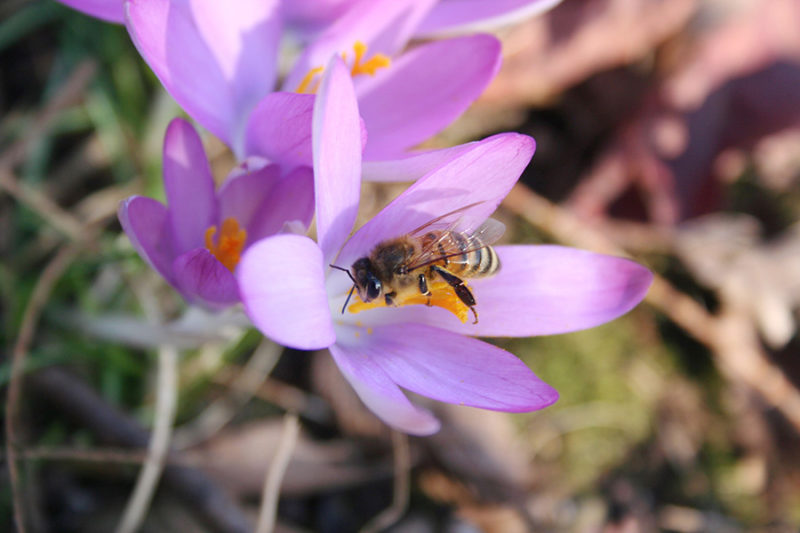
One of the first plants to emerge in the spring, crocus often appears when there’s still plenty of snow on the ground. In milder locales, the blooms may even pop up as early as January. Some varieties are known for blooming in the fall and can flower well into December. The delicate blossoms are a visual treat, especially after a long, harsh winter. While they don’t last long, they tend to spread if well-established.
Zone: 3 to 8
Bloom time: Late autumn and early spring, depending on the region.
3. English Primrose
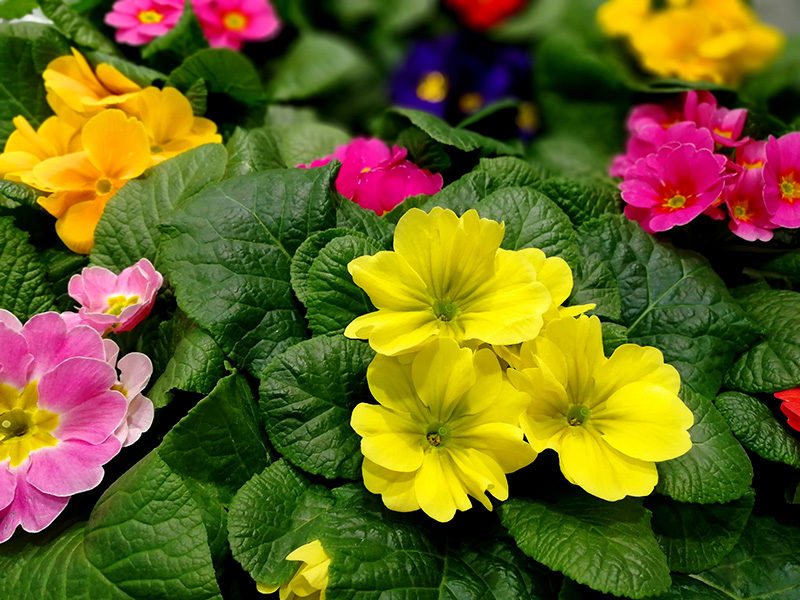
Not all varieties of primrose bloom in the winter, but those that do offer up a delightful display. This flower grows in small clusters and is available in a variety of hues. In the cooler months, the plant prefers full sun.
Zone: 4 to 8
Bloom time: Spring and winter, depending on the species.
4. Hellebore
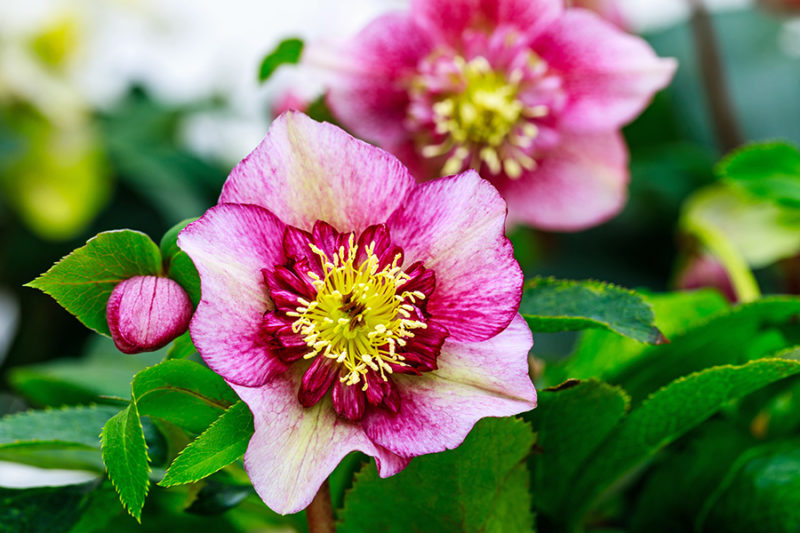
Also known as the winter rose, hellebore is a winter-hardy perennial with tough-looking foliage and beautiful flowers. Some varieties are known for their impressive late-winter blooms. Examples of late-flowering types include Silver Lace, Christmas Rose, and HGC Joel.
Zone: 4 to 9 in most cases, though it depends on the variety
Bloom time: Depending on the variety, blooms may appear in the late fall, winter, or early spring.
5. Witch Hazel

Splurge on winter-blooming witch hazel and bring a bit of life to your winter garden. The evergreen shrub typically produces red-hued blooms (though some types produce yellow flowers) and should be planted in full sun, though it tolerates some shade. Witch hazel is incredibly fragrant and has myriad medicinal uses.
Zone: 5 to 9
Bloom time: Winter
6. Sweet Alyssum
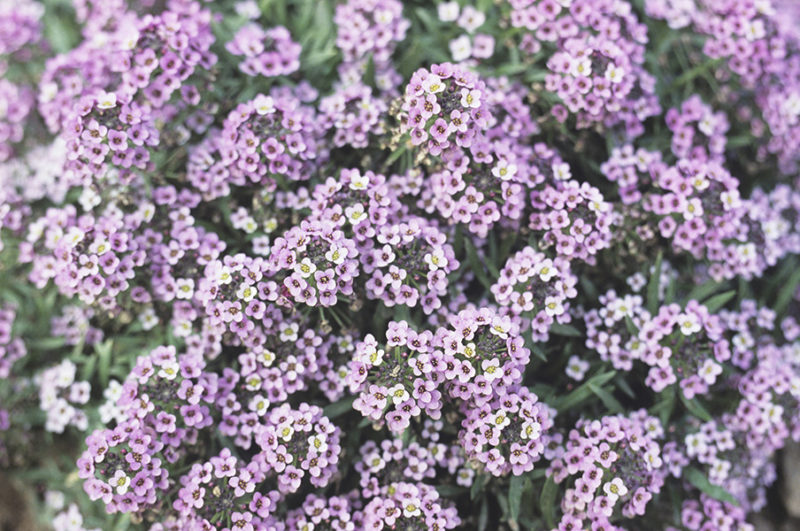
Sweet alyssum is a flower that actually prefers the cold and wilts away in the heat. The tufts of white flowers grow to a maximum of 6 inches in height and provide a fragrant blast to those walking nearby. Plant this flower in full sun for best results.
Zone: Annual, though it self-seeds freely.
Bloom time: Spring through to late fall. Some varieties will bloom through the winter, as well.
7. Snowdrop
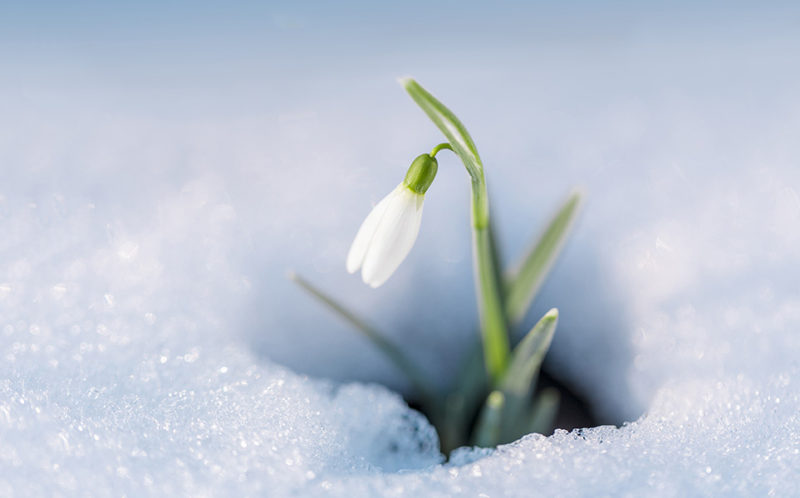
The name alone is a sign that you should use it to adorn your garden for the winter. The drooping white flowers sit atop a delicate bright green stem. They’re often seen flowering at the same time as crocuses but tend to crop up even earlier than their tiny buttercup-like friends.
Zone: 3 to 8
Bloom time: October to April, depending on the climate. In warmer climes, snowdrops bloom throughout the winter.
8. Ornamental Cabbage
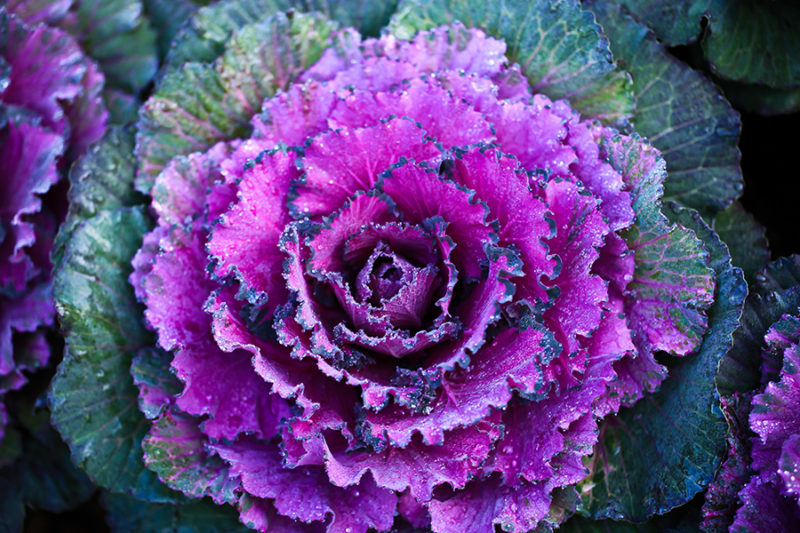
While this vegetable isn’t technically a flower, it provides a unique touch of color to the winter garden. You can even eat this type of flowering cabbage if you don’t mind a bit of bitterness. Enjoy colorful bursts of pinks and purples in your garden by planting these large heads of cabbage.
The cooler it gets, the more you’ll notice color emanating from the foliage. Plants should survive well into the winter months until it becomes too cold. Some protection may lengthen the lifespan of these plants, however.
Zone: Annual
Bloom time: Ornamental cabbage provides its color display as soon as the weather begins to cool and will survive until the temperatures dip below 5°F. In many cases, you’ll enjoy color until the end of December.
9. Japanese Quince
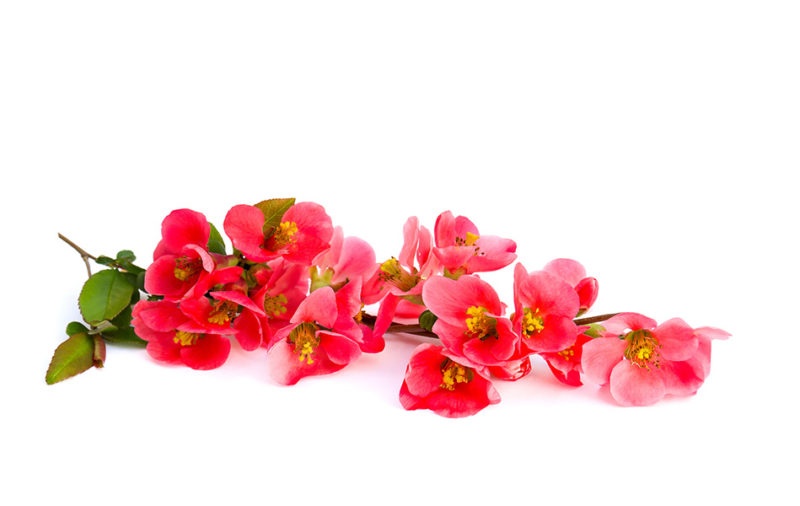
Plant this pretty shrub for a burst of color in the late winter and early spring. The plant is easy to grow and works well as a substitute for other border shrubs. After flowering, the plant will produce tiny edible fruits. Bloom hues available include white, orange, pink, and red. The plant can grow up to 10 feet tall and prefers full sun.
Zone: 4 to 9
Bloom time: Late winter and early spring.
10. Dogwood
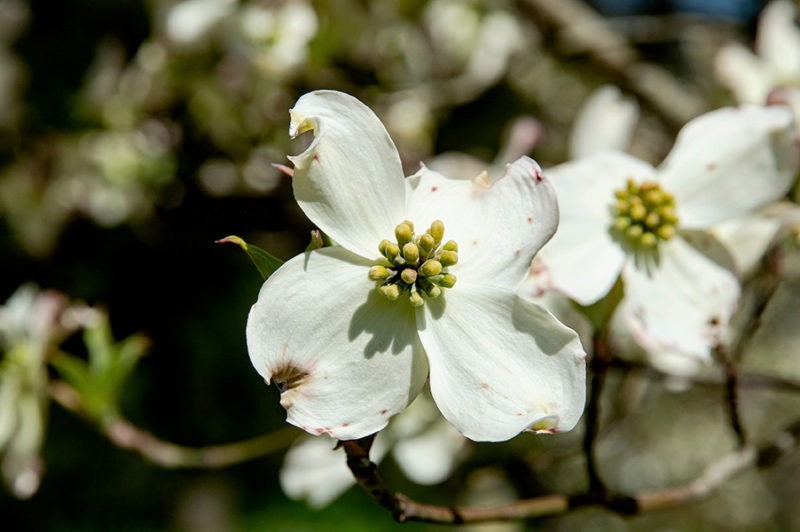
Dogwood is a prime choice for those interested in a plant that will stay beautiful all year long. Each season, the tree changes in appearance, but never fades away to leave behind a dull carcass. In the spring, you’ll be treated to a display of white or pink flowers that last into the summer. In the fall, small red fruits appear and last well into the winter, providing nutrients to birds.
Zone: 5+
Bloom time: Spring and summer. In the winter, the berries provide the color display. Some varieties bloom later.
11. Mahonia or Oregon Grape
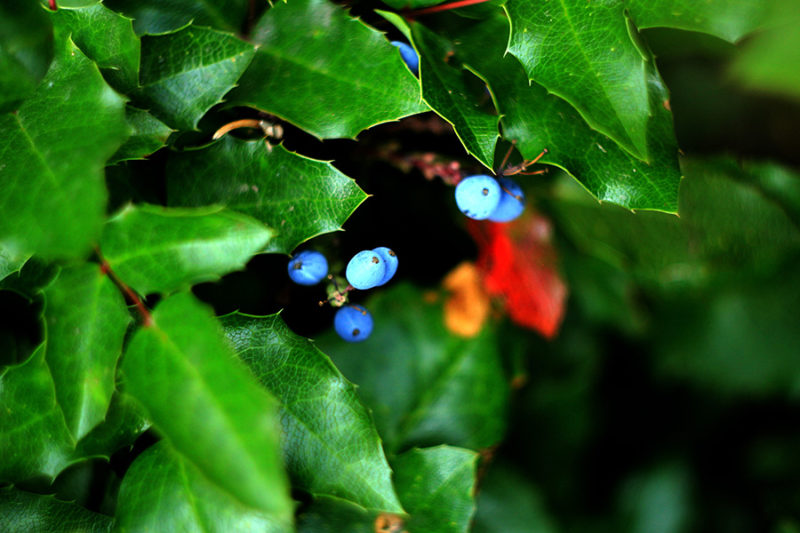
While you’re likely to spot red and white-hued blooms in the winter and early spring, yellow is less common. If you’re interested in a golden parade of blooms, choose Mahonia for your winter garden. The yellow flower clusters provide a bright golden brilliance during dull winter days. The shrubs grow slowly and should be well-watered until established.
Zone: 6 to 9
Bloom time: December until early spring.
12. Winter Heath
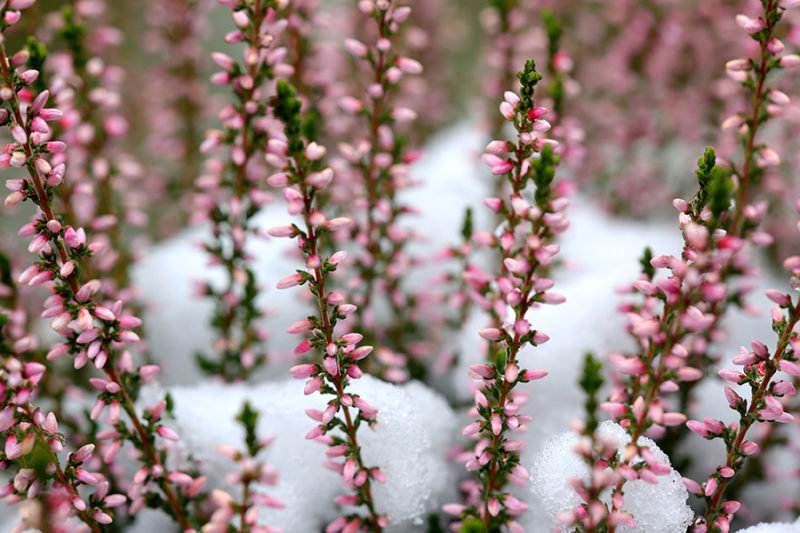
When snow blankets the ground and everything is left twig-bare, winter heaths can provide a tinge of color. These low-growing plants offer up a show of pinkish-colored flowers during the winter. Hardy and low-maintenance, they’re easy to grow almost anywhere, and the plants will flower even when covered in snow.
Zone: 3+
Bloom time: Late fall until early spring.
13. Camellia
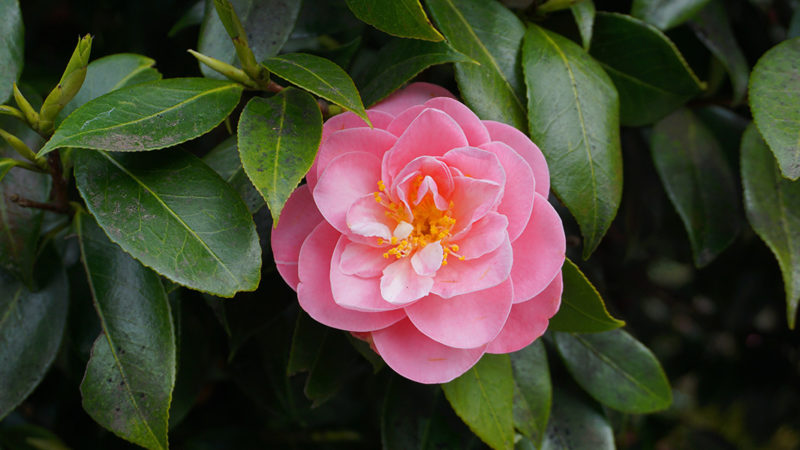
One of the advantages of choosing camellia as your flower of choice is that they bloom for a considerable amount of time compared to other flowering plants. Regardless, the foliage alone provides an attractive backdrop even when the flowers have ceased blooming.
Zone: 7 to 9 (though a few species are hardy to zone 6)
Bloom time: Late winter until the early spring.
14. Winter Pansies
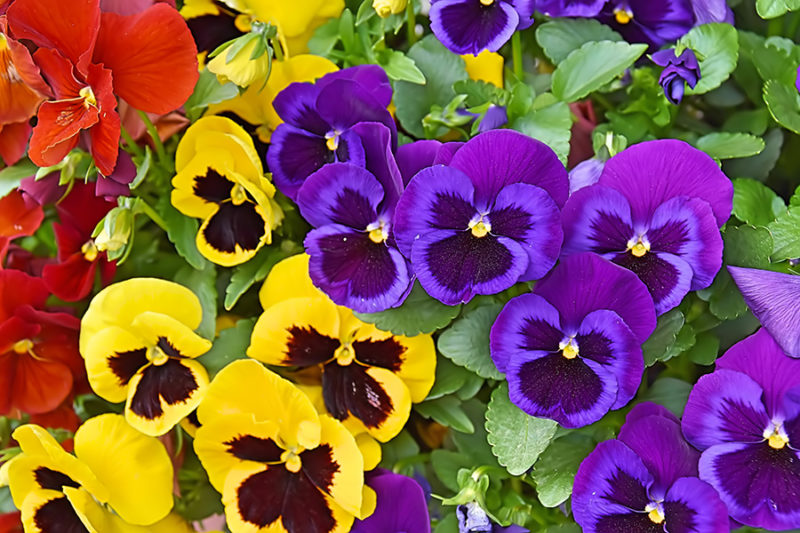
Pansies, commonly sold at nurseries, are hardy flowers that prefer cooler weather to sweltering heat. They won’t survive extremely harsh weather, but in zones 6 and up, most varieties will thrive well into the winter. A short frost likely won’t kill off your pansies, and may even promote the appearance of additional blooms.
Zone: 6+
Bloom time: Summer and winter (though timing depends on the climate in question).
15. Winter Jasmine
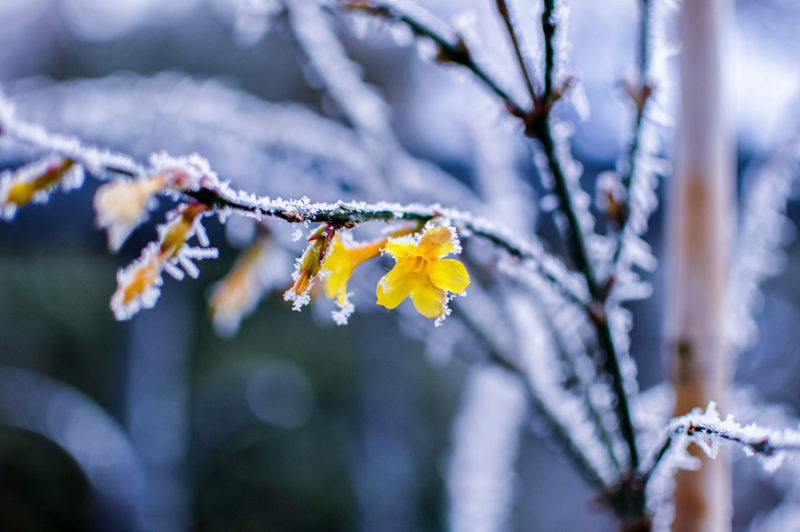
This winter gem has starry blossoms that pop up in the coldest of months. It’s a shrub that isn’t particularly beautiful when it isn’t in bloom, but by January, you suddenly have vibrant yellow peeking out of the frost and snow. It prefers full sun and will climb down rock walls and fences.
Zone: 6-10
Bloom time: January – Spring
16. Calendula
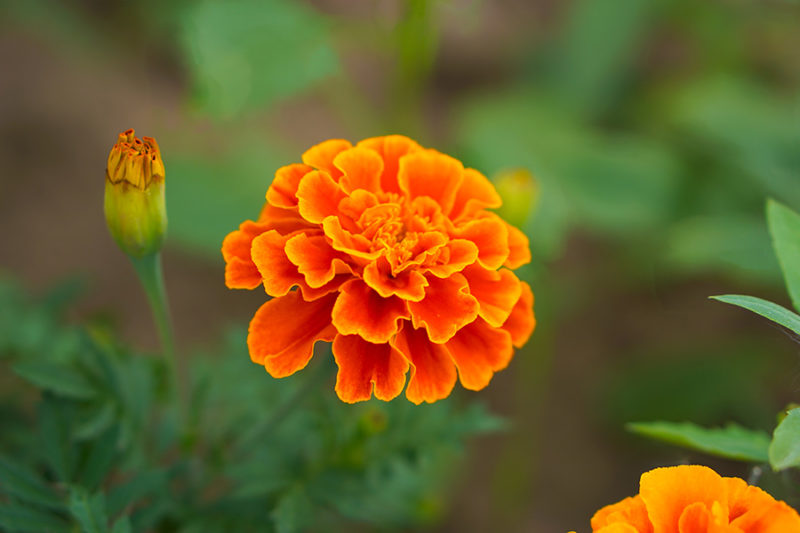
Calendula – aka marigold – blooms in the summer and fall, but some varieties will stick around past the frost and well into late fall. You can even urge them to give you a second blossom in the dead of winter in some areas. Even if they don’t bloom a second time, the green leaves add color to your garden. Bonus: calendula makes a delicious tea.
Zone: 9-11
Bloom time: Typically, summer until late fall.
17. Viola
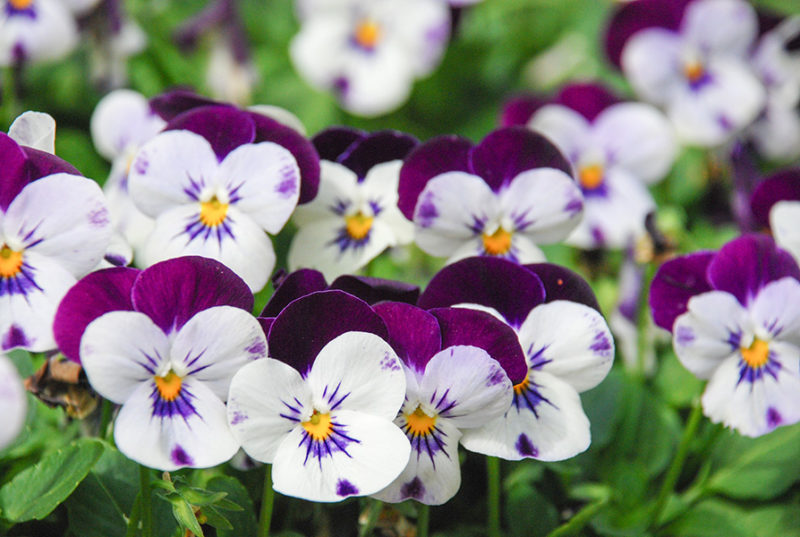
Violas really shine in the cooler months, and they’ll give you color in late fall and early spring when everything else is hiding away. In warmer climates, it will bloom all winter long. Like calendula, you can grow it as an annual for some late season color, or plant it and let it self-seed year after year.
Zone: 3-8
Bloom time: Spring and fall.
18. Japanese Andromeda
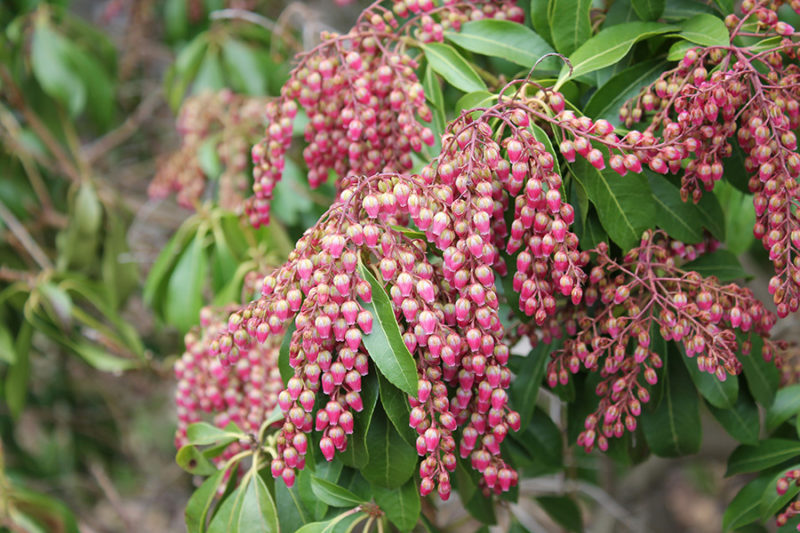
Also known as lily-of-the-valley, this plant has something to offer for every season. The foliage changes color all year round and in the fall, little cascades of buds appear that stick around all winter. In the spring, the buds open into lovely white blossoms. It thrives in part shade and prefers rich soil.
Zone: 5-9
Bloom time: Late winter to early spring.
19. Honeywort
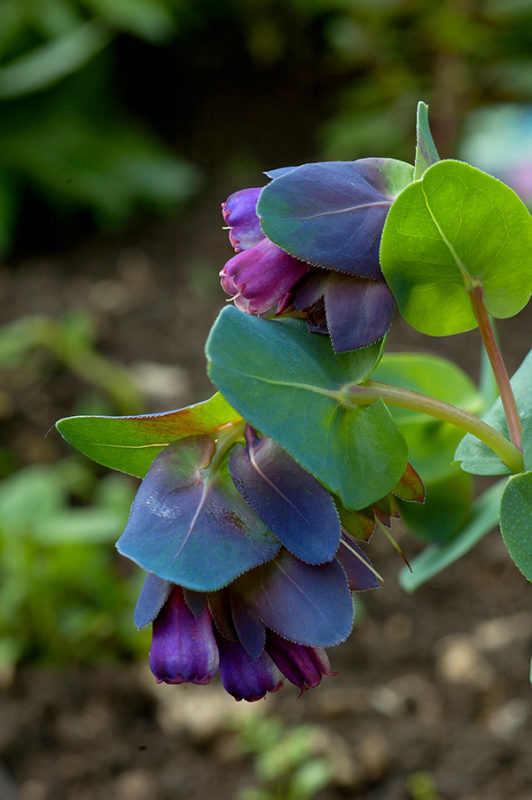
Honeywort isn’t wildly popular in the U.S., but it should be. It’s an annual or biannual that self-seeds freely. It has dark purple blossoms and mottled grey leaves that stand out in the garden. It likes full sun and dry, poor soil.
Zone: 9-10
Bloom time: Late fall.
20. Winter Honeysuckle
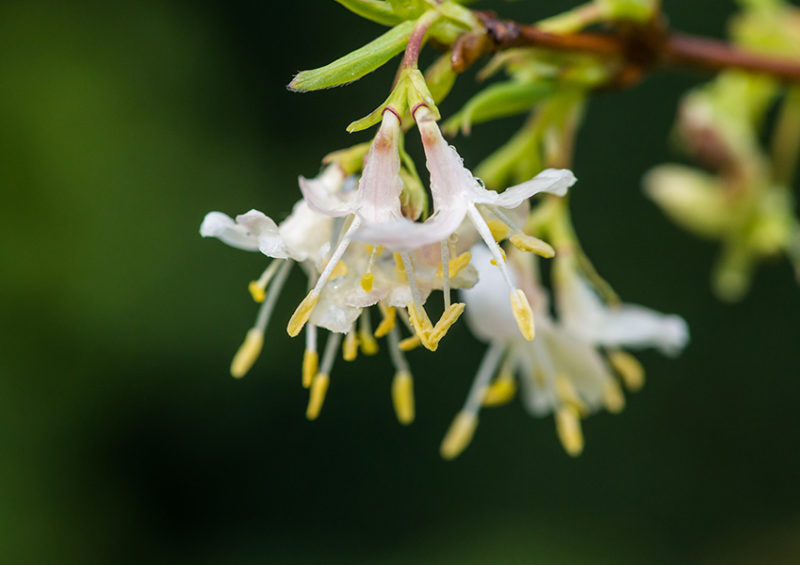
Winter honeysuckle is the definition of an easy-to-care-for plant. Full sun or partial shade and some soil that isn’t waterlogged and you’re good to go. It has extraordinarily fragrant white flowers in the cold months.
Zone: 4-10.
Bloom time: Late winter to early spring.
21. Algerian Iris
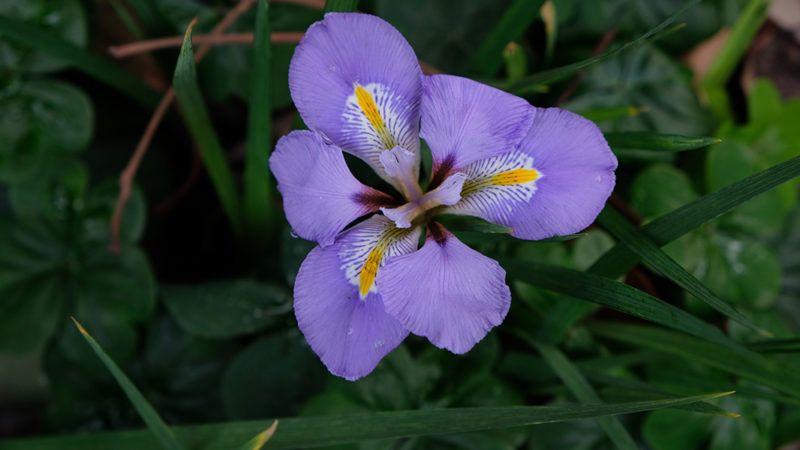
Algerian iris isn’t widely known in the U.S., but it’s another fantastic option if you live in the right zone and want some vibrant winter color. It has deep violet to lavender flowers with a yellow stripe down each petal. It can tolerate some drought and thrives in full sun to part shade.
Zone: 6-9
Bloom time: Late fall to early spring.
22. Viburnum
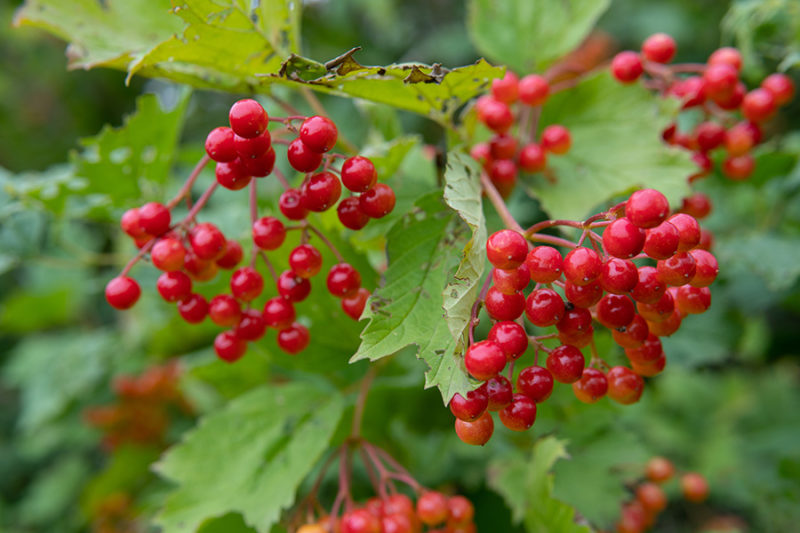
Not all viburnum blooms in the winter, but some varieties, like “dawn,” have a vibrant pink display from December into February. It’s drought-tolerant and a fan of full sun. In the winter, you can snip the branches and force them to bloom indoors. After the flowering, beautiful red berries appear.
Zone: 5-9
Bloom time: December to February (depending on the variety).
23. Glory of Snow
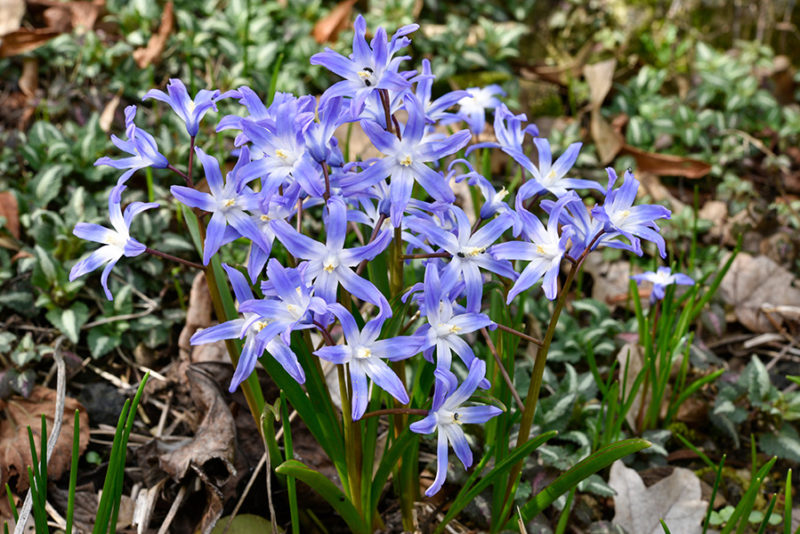
This member of the lily family pops up when snow is still on the ground (as the name implies). The downside is that it can spread aggressively if you aren’t careful. You can find this plant in pink, white, or blue varieties. Prefers part sun.
Zone: 3-8
Bloom time: Early to late spring.
24. Daphne
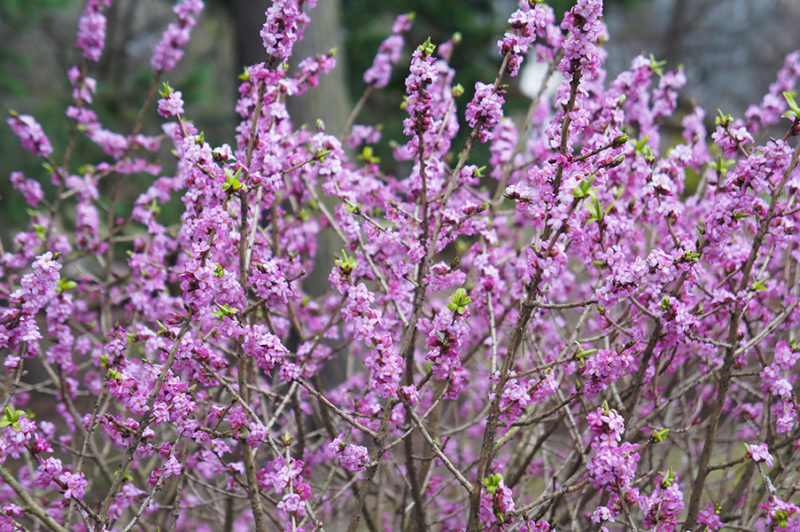
Daphnes are evergreen or semi-evergreen shrubs that have fragrant flowers all winter long. If the female plant gets pollinated, it will have bright red berries after the bloom, adding another season of color. Even when they aren’t blooming, the variegated leaves are lovely.
Zone: 4-9.
Bloom time: Depending on the variety, late winter to early spring.
Making the Most of Winter Flowers
Whether you plant an entire winter flower garden (share pics with us if you do!), or you’re just looking to add a splash of color your patio in the colder months, you can’t go wrong with any of the plants we recommend here. If we forgot your favorite, let us know what it is in the comments.
